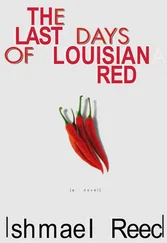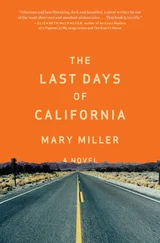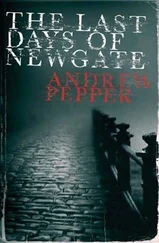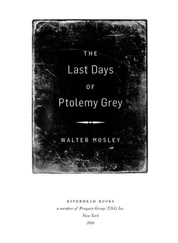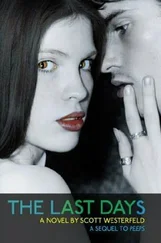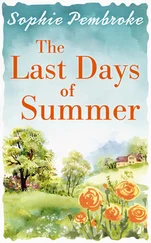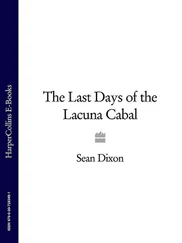smoke figures wafting in and out of presence:Wolfgang Paalen, the Austrian-Mexican painter, created the semiautomatic method that led to the “fumages” manifest here in the late 1930s, by holding his paper or canvas over a lit candle or oil lamp so the soot and smoke discolored it, moving it so the marks extended into vaguely recognizable shapes. Over these figures of evanescent schmutz he would then layer ink and/or paint, amending, adding details and texture.
“The horse head.”:Thibaut was later to see her photograph of what Sam called “the horse head.” It was a tall and sinister robed figure, staring at the camera, fingering a crucifix in its bulky three-fingered hand. As much, he said, as the cast to a head was equine, it was canine, and savagely fanged. I believe this to be a manif from Leonora Carrington’s 1941 drawing, Do You Know My Aunt Eliza?
Seligmann. Colquhoun. Ernst and de Givry:The Surrealists had a long interest in divination, the occult, the hermetic and alchemical and traditions of witchcraft. As well as Ithell Colquhoun, among many other figures who exemplify this tradition are Grillot de Givry (whose 1929 book Le Musée des sorciers, mages et alchimistes the Surrealists enthusiastically greeted) and Kurt Seligmann, and the inspirations Nicolas Flamel, Hermes Trismegistus, Agrippa and Joséphin “Sar” Péladan.
“‘On Certain Possibilities of the Irrational Embellishment of a City.’”:The source of so much of the matter of New Paris, the extraordinary questionnaire-style article about the “irrational embellishment” of Paris, “Sur certaines possibilités d’embellissement irrationnel d’une ville” dates, as noted, from 1933, from issue 6 of Le Surréalisme au service de la révolution. The piece asks, of seven Surrealists, “[s]hould one keep, move, modify, transform or remove” thirty-one varied and eccentrically chosen Parisian sites (though none of those asked give answers for all of them). Those questioned are Andre Bréton, Paul Éluard, Arthur Harfaux, Maurice Henry, the redoubtable Trotskyist Benjamin Péret, Tristan Tzara, and Georges Wenstein. Not particularly widely cited in the English-language literature on the movement in our timeline, it is obvious from his story that in Thibaut’s, this piece has become central to the manifestational nature of New Paris.
“‘Chemical-blue, twisted machines of jujube-trees of rotten flesh?’”:The description of the manif inhabitants of the forests that Thibaut quotes comes from the Martinican poet and theorist of Négritude Aimé Césaire, from his Cahier d’un retour au pays natal, (Notebook of a Return to the Native Land), published initially in 1939, and in expanded version (in our reality), with a fervent encomium from Breton, in 1947. Césaire, in his original, is not merely describing but invoking the ghosts that manifest in New Paris: “Rise, phantoms, chemical-blue from a forest of hunted beasts of twisted machines of jujube-trees of rotten flesh of a basket of oysters of eyes of a lacework of lashes cut from the lovely sisal of human skin.”
a feathered sphere the size of a fist:The feathered lookers that feed on the sight of Thibaut and Sam are manifs of the 1937 painting Object-Phantom by the astonishing Czech artist known as Toyen, after rejecting the name Marie Čermínová, (and, in Czech grammar, the feminine gender). Toyen’s work seems to have had a strong influence on the topography and inhabitants of New Paris, after the S-Blast.
a winged monkey with owl’s eyes:The monkey on the windowsill is instantly recognizable as a manif of the beast crouching at the feet of the semi-nude woman in a doorway in Dorothea Tanning’s 1942 painting The Birthday.
It stands like a person under a great weight … hedgerow chic:They did not invent the game of “Consequences,” but at 54 rue du Château in the late teens or early 1920s, the Surrealists certainly developed it, giving it the name by which we now know it—“Exquisite Corpse.” They raised it to a, perhaps the, central place in all their methodologies. Simone Kahn describes the technique and its importance: “On one of those idle, weary nights which were quite numerous in the early days of Surrealism… the Exquisite Corpse was invented… The technique of transmission was readily found: the sheet would be folded after the first player’s drawing, three or four of its lines passing beyond the fold. The next player would start by prolonging these lines and giving them shape, without having seen the first. From then on, it was delirium.” “[W]e had at our command an infallible way of holding the critical intellect in abeyance, and of fully liberating the mind’s metaphorical activity,” Breton said.
There are countless beautiful examples in the archives. Some are simple lines of black ink on paper; some are carefully colored; some are much more complex and time-consuming cut-and-paste works. Grotesque, playful, sinister, combining the iconography of politics, the components of a bestiary, industrial machinery, and dream grammar. The collaborations include the work of Oscar Dominguez, Yves Tanguy, Pierre Naville, Jeannette Tanguy, Gerardo Lizárraga, Greta Knutson, Valentine Hugo, Breton, Max Morise, André Masson, Nusch Éluard, Picasso, Man Ray, Duchamp, and many others.
The exquisite corpse of which Thibaut and Sam became unlikely companions—which can be seen as the frontispiece of this book—is manif of a 1938 composite collage of stuck-together engraved images by André Breton, Yves Tanguy, and Jacqueline Lamba. It stands, a tottering pile of parts, and looks out from below its caterpillar hat with a vatic melancholy.
everyone … feels as if they are on the mezzanine of a snake-flecked staircase:Thibaut was very specific about this anxiousness he felt in the moment described, putting me in mind of Pierre Roy’s 1927 or 1928 oil painting, Danger on the Stairs, of a large snake descending and crawling, toward the viewer.
They are in rubble full of birdcages … a baby’s face the size of a room:The shooting ranges are manifs from Toyen’s various drawings of that title, dating from 1939 to 1940, variations of the flat, troubling, and troubled landscapes. All the components and inhabitants of these stretches Thibaut described to me are from these images: the giant baby’s head, for example, is depicted in Tir IV / The Shooting Gallery.
a storm of birds:Birds recur throughout Surrealist iconography, and this collective bird mentioned, the dancing figure Thibaut saw in the sky, may be Loplop, Max Ernst’s “Bird Superior.”
Chabrun, Léo Malet and Tita:The role of these and other stalwarts of La Main à plume, the clandestine Surrealist group, is, of course, more dramatic in New Paris (not that it was uninteresting or without incident in ours).
Thibaut had fought the Carlingue once, alongside Laurence Iché:I tried repeatedly to persuade Thibaut to speak more of his Main à plume comrades but he was resistant, burdened, it seemed to me, with a respect and mourning that muted him for reasons he could not articulate: their death clearly weighed very heavily on him. Particularly Iché’s. In our timeline, Iché survived the war and lived until 2007. For reasons I can’t explain, including to myself, I did not tell him this.
The manifs he described fighting alongside, that Iché was able to bring forth and direct, come from her poem “I Prefer Your Uneasiness Like a Dark Lantern,” published—in our reality—in Au fil du vent in 1942. There she writes of “[t]he eagle-headed caterpillar,” “the wind-haired eagle,” and “the bath of shredded mirrors.”
Читать дальше

